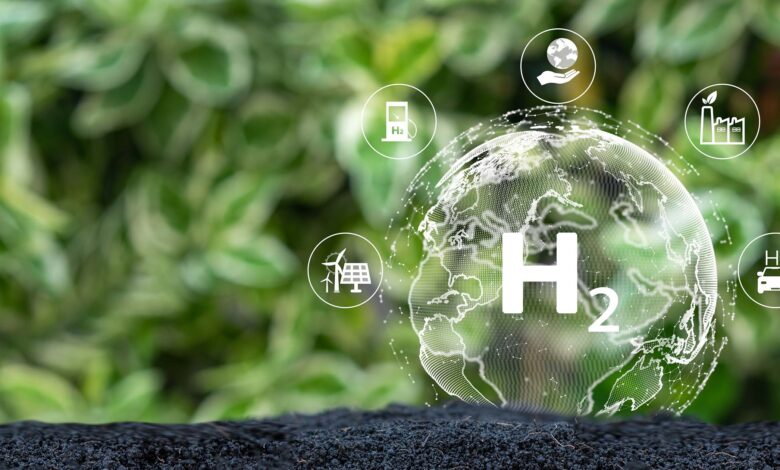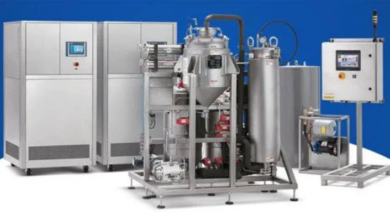The Role of Hydrogen Fuel Cells in Achieving a Decarbonized Future

Hydrogen fuel cells are gaining recognition as a vital technology in the global push for clean energy. By converting hydrogen into electricity without combustion, they produce power with only water and heat as byproducts. This makes them an efficient and eco-friendly alternative to fossil fuels, supporting industries and transportation sectors in reducing carbon emissions. As countries aim for greener energy transitions, fuel cells stand out for their reliability and ability to integrate with renewable sources.
Companies at the forefront of this innovation demonstrate how fuel cells can drive large-scale change. For example, Bloom Energy LinkedIn highlights advancements in hydrogen-powered solutions that enable cleaner electricity generation for businesses and communities. By scaling these technologies, organizations are helping to create resilient energy systems that lower emissions and contribute to a sustainable, decarbonized future.
Why a Decarbonized Future Matters
As global temperatures climb and the impacts of climate change intensify, the urgency to minimize reliance on carbon-heavy fossil fuels becomes ever more apparent. Governments, businesses, and communities are committing to ambitious carbon neutrality targets and adopting renewable energy frameworks. Achieving these targets, however, requires scalable solutions beyond wind and solar. That’s where hydrogen fuel cells stand out, bridging technology gaps and complementing the systems already in place.
A decarbonized future mitigates environmental damage and secures energy independence and economic resilience. By aligning with leading energy transition strategies, hydrogen fuel cells help fulfill the promise of miles-free, zero-emissions transport and clean industrial power—meeting both sustainability and practical needs.
Sectors Benefiting from Hydrogen Fuel Cells
Hydrogen fuel cells are seeing accelerated adoption across sectors historically relying on carbon-intensive fuels. In transportation, hydrogen-powered trucks, buses, and trains are becoming more common, especially where long range and rapid refueling are priorities. For example, logistics and public transit fleets in urban centers are turning to hydrogen to maintain performance while slashing emissions. Pilot programs in North America, Europe, and Asia are scaling up, underscoring the technology’s viability.
Heavy industry also stands to gain from this shift. Refineries, steel factories, and chemical companies are investigating hydrogen as an alternative feedstock and a substitute for natural gas. Moreover, utilities are incorporating hydrogen into power generation to help balance renewable sources and ensure a stable supply. The cement and ammonia industries, which have long relied on fossil fuels, are exploring hydrogen integration to substantially reduce their emissions at an industrial level.
Technological Progress and Innovation
Advances in hydrogen production, distribution, and utilization are transforming fuel cell economics. One breakthrough is the rapid development of green hydrogen, produced using renewable energy and electrolysis, rather than fossil fuels. This process drastically reduces lifecycle emissions and aligns with global efforts to decarbonize industry and transport collectively. Furthermore, fuel cell efficiency and durability are improving, reducing maintenance and operational costs.
Emerging Solutions
Innovation also drives new storage and fueling infrastructure, enabling safer, faster refueling for large vehicles and industrial applications. Integrated projects now combine battery storage, fuel cell backup, and onsite renewables, creating distributed energy systems that are both resilient and carbon-free. Expanding hydrogen supply chains, supported by government policy and private investment, ensures that scaling up is possible without compromising reliability or geographical reach.
Key Challenges Ahead
Despite its promise, hydrogen fuel cell technology faces significant barriers before mass adoption is realized. Infrastructure remains a major obstacle: constructing fueling stations, storage facilities, and pipelines requires substantial time, coordination, and financing. Additionally, the current cost of green hydrogen production is relatively high, though it is expected to decrease as electrolyzer technology matures and renewable electricity becomes cheaper.
Regulatory frameworks, safety standards, and market incentives vary widely by country and region, complicating efforts to build interoperable systems. Ongoing education and workforce training are also needed to support expansion. Achieving the full potential of hydrogen fuel cells will require policymakers, industry leaders, and communities to work in unison, share best practices, and maintain transparency around technology risks and rewards.
Moving Toward a Cleaner Tomorrow
The next decade is critical for advancing hydrogen’s role in the energy transition. Projections indicate that hydrogen could fuel sizable portions of heavy transport, shipping, aviation, and industry by 2050, dramatically cutting carbon emissions and supporting international climate agreements. As pilot projects move to commercial scale and investment accelerates, lessons learned will continue to inform scalable and cost-effective rollouts worldwide.
Embracing a hydrogen-powered future not only fosters a cleaner environment but also creates green jobs, stimulates economic growth, and strengthens energy security. With growing momentum in policy, innovation, and industry collaboration, hydrogen fuel cells are positioned to become a cornerstone of the global energy system—helping realize a decarbonized, sustainable future.



